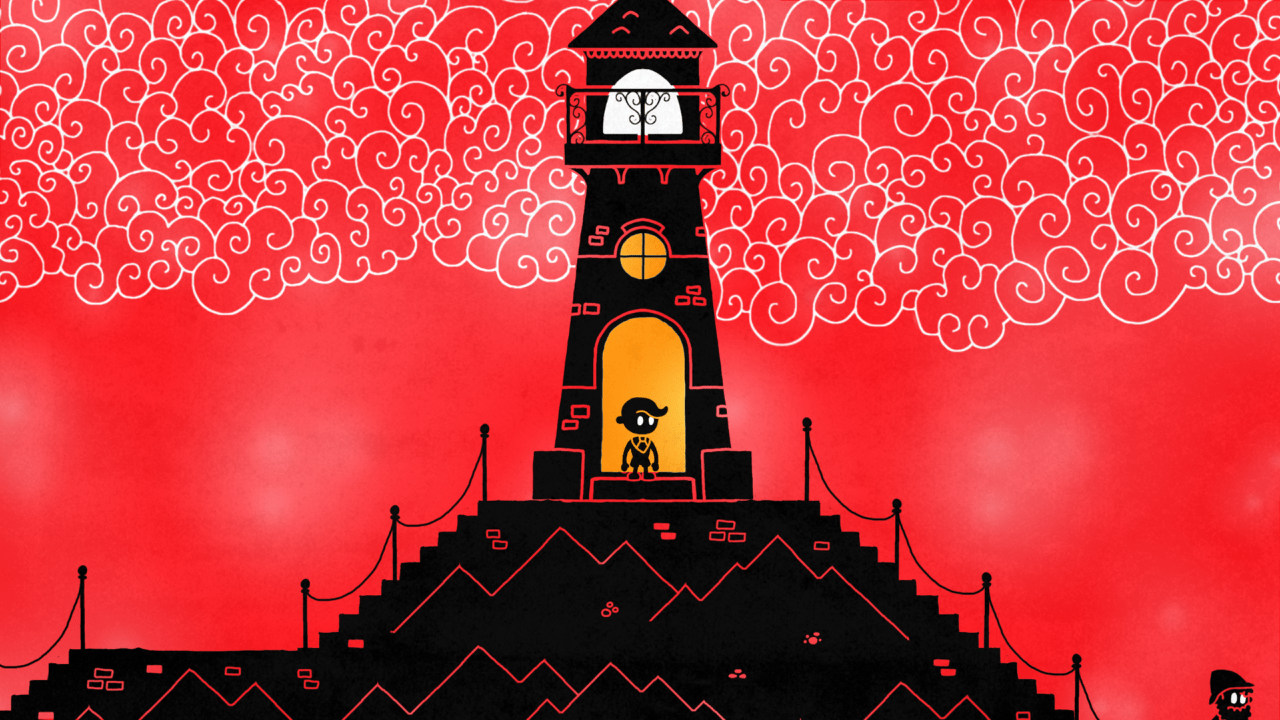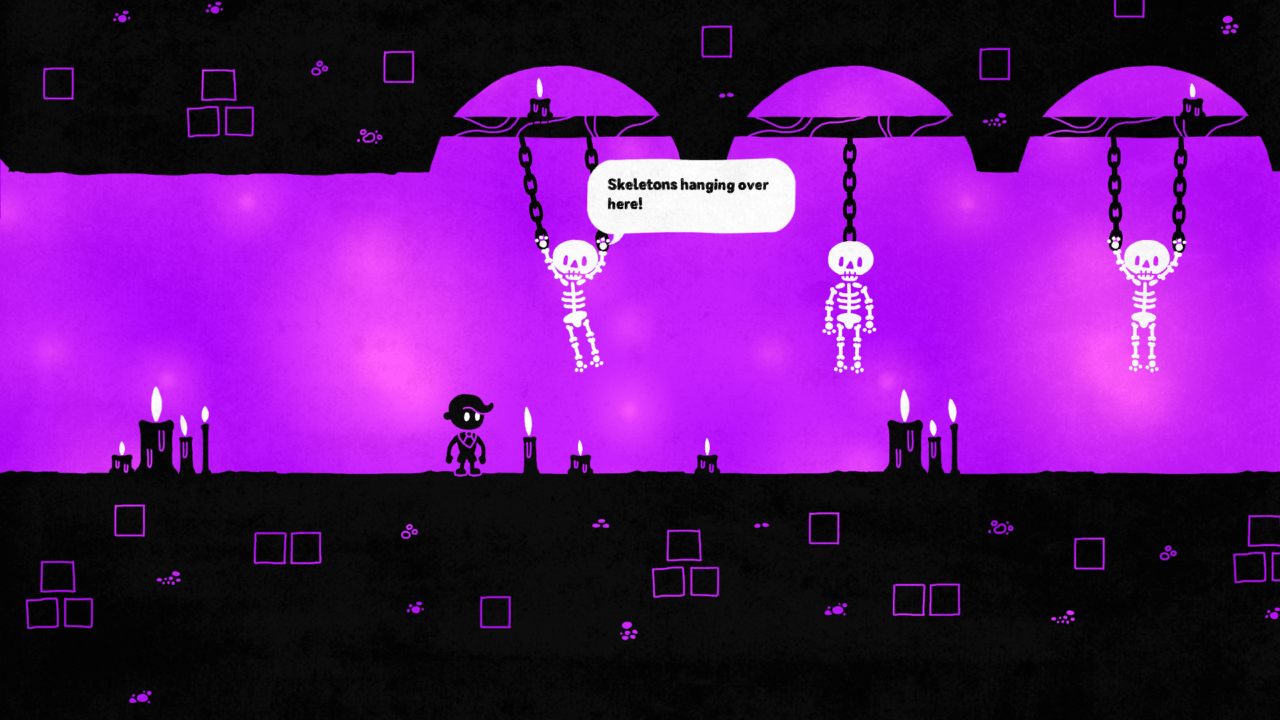
Hue – An excellent, well-crafted, puzzle platformer
*****
Reviewed September 03, 2016 on Xbox One
Leave a comment on Giant Bomb
Disclosure: An Xbox One download code was provided by the publisher for this review
Hue is a great example of a game where it all comes together - the controls are tight, the art is stunning, the music is fitting, the puzzles are well crafted, and the narrative is intriguing. Every element feels considered, and the result is a truly excellent puzzle platformer. Though this is well-worn territory, Hue feels fresh and exciting, and it far exceeded my expectations.
Hue is the story of, perhaps unsurprisingly, a boy named Hue. Hue's goal in the game is simple - he is attempting to be reunited with his mother, the game's narrator, following a series of events that have rendered her invisible. To do so, Hue collects colours he can use to manipulate the otherwise monochrome world, and is apparently guided to these by a mysterious robed figure (who at some point I started referring to as "Hood Dude" for no particular reason). As Hue discovers these colours, he also encounters letters from his mother, which slowly reveals the mother's backstory via her narration. Though not especially ground-breaking, this narrative was intriguing enough to pull me into the game's world, and raised a number of interesting philosophical questions along the way. A largely throwaway line - "Maybe next I'll stumble on a third dimension!" - sent me tumbling down the path of "Well, the colour sort of serve as analogues of stacked 2D planes...". It's a simple tale, but adds much to the overall experience.
At its core, Hue is a mechanically simple game, but from this simple base a wide array of progressively more intricate and challenging puzzles are constructed. The game's unique mechanic is the colour manipulation; once a colour has been found by Hue, the level's background can be changed to match that colour. This has two major effects - obstacles of that colour effectively vanish, allowing Hue to reach new areas, and hazards (such as lasers) are neutralised. Other puzzle elements, such as movable blocks, lasers, colour-changing jets, and Thwomp-like enemies, are slowly introduced over the course of the game, and intelligent level design very smoothly ramps up the game's difficulty.
It is perhaps this level design philosophy that most impressed me during my time with Hue. The game effectively tutorialises new puzzle mechanics without making it obvious that it is doing so, allowing new elements to be introduced without overt explanation. It reminded me of Miyamoto-san's comments on the design of Super Mario's World 1-1 - new players are essentially forced to hit a Super Mushroom, revealing that it is a power-up. In a similar manner, as Hue introduces new items, the player is forced to interact with them, but in a way that makes the solution obvious. For instance, crumbling blocks are added early on in the game, and the first usage is simply three in a row over a pit, which isn't much of a challenge but makes it obvious what they do. Hue then rapidly incorporates existing mechanics with the new blocks, and steadily builds towards some rather challenging final puzzles. It's a fairly simple technique, but Hue makes excellent use of it, meaning that even the difficult puzzles towards the end of the game are largely frustration free.
It perhaps goes without saying giving the game's theme of colour, but the artstyle used in Hue is equally good. Starting purely as a monochrome world, Hue's silhouette style is reminiscent of Limbo. Even in monochrome, the art is sharp and full of nice touches; it was weirdly fun to discover that some background elements, such as light bulbs or items on shelves, were interactable and could be knocked around by jumping into them. Even in the last stages of the game, jumping and hitting a light bulb never stopped being charming. Starting in the monochrome world was also a smart design choice - the first time splashing the seas and sky in aqua after finding the first colour really stood out, and is a surprisingly memorable moment.
This artstyle is accompanied by a fitting atmospheric soundtrack. It's not the sort of soundtrack I'm likely to listen to outside of the game, but it captures the mood of the game perfectly. The subtle melancholy of the first half of the game steadily gives way to more rousing, tense tracks as the game approaches its conclusion, and it forms an excellent accompaniment to the vibrant colours of the rest of the game. Hue's audio is completed with some great voice acting for the mother/narrator, and a character known as Dr. Grey.
Though Hue features colour as its central theme, the game includes a colourblind mode, where each colour is represented by a different symbol. It would be all too easy to conclude that a game so focused on colour simply isn't suitable for colourblind players, and I commend the developers for at least considering these issues and coming up with a solution. Not being colourblind myself, I can't say if the mode is completely successful or not, but the symbols appear to be distinct enough and used such that I believe they would be useful to colourblind players.
The only real complaint I had with the game, and it is trivial given the strength of the rest of the game, is with the collectables. There appears to be no reason to collect them (outside of achievements/trophies), leading them to feel somewhat out of place. They could, maybe, be used to give an additional layer of challenge to some puzzles, but this is stymied by the placement of them, particularly in the latter half of the game. All too often, they were hidden behind walls that appear impassible, but that the player can pass through for no obvious reason. It is a minor issue for sure, but one that stood out when I went back to find the collectables I had missed.
Another slight issue is that some of the letter narrations are in long, near featureless, corridors. On a first playthrough, this serves to give time for the audio to play out before throwing the player into a puzzle, but on subsequent playthroughs feels like needless padding. I'm not entirely sure how this problem could be avoided, but it did make replaying the game somewhat less appealing.
Overall, Hue is an excellent puzzle platformer, and I highly recommend it to anyone with even a passing interest in the genre. The vibrant look and smooth difficulty curve make it a pleasure to play; coupling that with an intriguing, albeit light, narrative and an excellent soundtrack makes for an experience that is difficult to criticise. Indeed, I had no qualms about immediately starting a second playthrough to search for collectables that I has missed or overlooked, something that can be said about very few other games of this genre. This is a highly impressive game.

